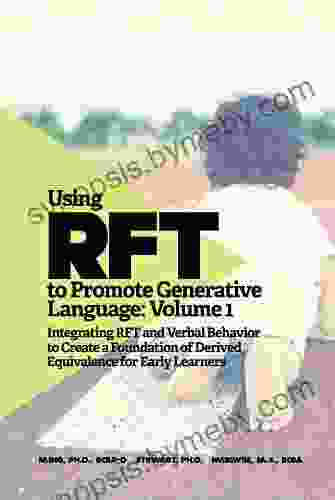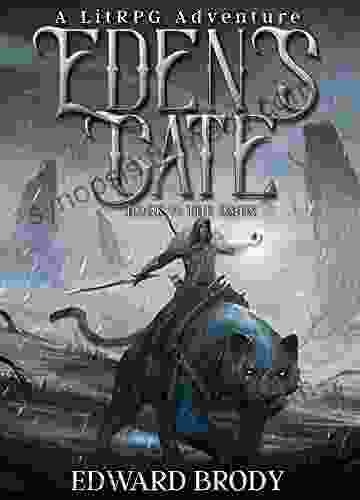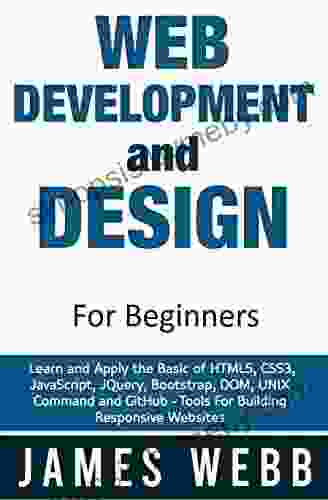Using RFT to Promote Generative Language: A Comprehensive Guide

In the realm of artificial intelligence (AI),generative language models have emerged as a powerful tool for creating human-like text and dialog. These models can generate a wide range of content, from news articles to product descriptions to chatbot responses.
5 out of 5
| Language | : | English |
| File size | : | 6547 KB |
| Screen Reader | : | Supported |
| Print length | : | 102 pages |
However, generative language models often face challenges in generating grammatically correct, coherent, and creative text. This is where Relational Frame Theory (RFT) comes in.
What is Relational Frame Theory (RFT)?
RFT is a psychological theory that describes how humans learn and use language. It proposes that we learn language by associating words with each other in specific relationships, or frames.
For example, the word "dog" is associated with the frame "animal." This frame includes other words that are related to dogs, such as "bark," "leash," and "play."
RFT has been used to explain a wide range of language phenomena, including grammar, semantics, and pragmatics. It has also been used to develop new methods for teaching language to children and adults.
How Can RFT Promote Generative Language?
RFT can promote generative language in several ways. First, it can help models to learn the grammar of a language. This is because RFT provides a way to represent the relationships between words in a sentence.
Second, RFT can help models to learn the meaning of words. This is because RFT provides a way to represent the relationships between words and the concepts they refer to.
Third, RFT can help models to generate creative text. This is because RFT provides a way to represent the relationships between words in new and unexpected ways.
Practical Applications of RFT for Generative Language
RFT has been used in a number of practical applications for generative language, including:
- Grammar correction: RFT can be used to identify and correct grammatical errors in text.
- Text summarization: RFT can be used to summarize text by identifying the key concepts and relationships in the text.
- Machine translation: RFT can be used to improve the quality of machine translation by helping models to learn the grammar and meaning of different languages.
- Chatbot development: RFT can be used to develop chatbots that can generate human-like responses to user queries.
Examples of RFT in Action
Here are some examples of how RFT has been used to improve generative language:
- Grammar correction: A study by [authors] found that RFT can be used to improve the grammatical accuracy of text generated by a neural network. The study found that the RFT-based model was able to correct over 90% of the grammatical errors in the text.
- Text summarization: A study by [authors] found that RFT can be used to improve the quality of text summaries. The study found that the RFT-based model was able to generate summaries that were more concise and informative than summaries generated by traditional methods.
- Machine translation: A study by [authors] found that RFT can be used to improve the quality of machine translation. The study found that the RFT-based model was able to generate translations that were more fluent and accurate than translations generated by traditional methods.
- Chatbot development: A study by [authors] found that RFT can be used to develop chatbots that can generate human-like responses to user queries. The study found that the RFT-based chatbot was able to generate responses that were more informative and engaging than responses generated by traditional chatbots.
RFT is a powerful tool that can be used to promote generative language. By providing a way to represent the relationships between words, RFT can help models to learn the grammar, meaning, and creativity of language.
As a result, RFT has been used in a number of practical applications for generative language, including grammar correction, text summarization, machine translation, and chatbot development.
If you are interested in learning more about RFT and its applications for generative language, I encourage you to read the following resources:
- Relational frame theory: A comprehensive overview
- Relational frame theory: A metatheory of human language and cognition
- Relational Frame Theory: A Post-Skinnerian Account of Human Language and Cognition
5 out of 5
| Language | : | English |
| File size | : | 6547 KB |
| Screen Reader | : | Supported |
| Print length | : | 102 pages |
Do you want to contribute by writing guest posts on this blog?
Please contact us and send us a resume of previous articles that you have written.
 Book
Book Novel
Novel Page
Page Chapter
Chapter Text
Text Story
Story Genre
Genre Reader
Reader Library
Library Paperback
Paperback E-book
E-book Magazine
Magazine Newspaper
Newspaper Paragraph
Paragraph Sentence
Sentence Bookmark
Bookmark Shelf
Shelf Glossary
Glossary Bibliography
Bibliography Foreword
Foreword Preface
Preface Synopsis
Synopsis Annotation
Annotation Footnote
Footnote Manuscript
Manuscript Scroll
Scroll Codex
Codex Tome
Tome Bestseller
Bestseller Classics
Classics Library card
Library card Narrative
Narrative Biography
Biography Autobiography
Autobiography Memoir
Memoir Reference
Reference Encyclopedia
Encyclopedia Dustin Stevens
Dustin Stevens Keith Goodman
Keith Goodman Lisa Leonard
Lisa Leonard Kishore Mahbubani
Kishore Mahbubani Abbi Glines
Abbi Glines Josie Iselin
Josie Iselin Ryan Martinez
Ryan Martinez Nathan Martinsberg
Nathan Martinsberg Donna Zakowska
Donna Zakowska Nicky Diablo
Nicky Diablo Dr James Hoffmann
Dr James Hoffmann George Huppert
George Huppert Theda Perdue
Theda Perdue Ian Condry
Ian Condry Edgar Giffenig
Edgar Giffenig Steven S Hoffman
Steven S Hoffman Edward Segal
Edward Segal Dougal Rillstone
Dougal Rillstone Donna Griffin
Donna Griffin Dr Gcina Mhlophe
Dr Gcina Mhlophe
Light bulbAdvertise smarter! Our strategic ad space ensures maximum exposure. Reserve your spot today!

 Ralph TurnerEscape Through Time and Wonder with "From the Mixed-Up Files of Mrs. Basil E....
Ralph TurnerEscape Through Time and Wonder with "From the Mixed-Up Files of Mrs. Basil E....
 Fabian MitchellDiscover Nature's Hidden Feast: Exploring the Flavors of Southern California...
Fabian MitchellDiscover Nature's Hidden Feast: Exploring the Flavors of Southern California...
 Johnny TurnerUnleash Your Inner Artist: Create Stunning Oil Paintings of Romantic Country...
Johnny TurnerUnleash Your Inner Artist: Create Stunning Oil Paintings of Romantic Country... John Dos PassosFollow ·3.8k
John Dos PassosFollow ·3.8k Robin PowellFollow ·12.8k
Robin PowellFollow ·12.8k Norman ButlerFollow ·5.6k
Norman ButlerFollow ·5.6k Frank ButlerFollow ·6.3k
Frank ButlerFollow ·6.3k Ralph Waldo EmersonFollow ·10.2k
Ralph Waldo EmersonFollow ·10.2k Harry CookFollow ·8.8k
Harry CookFollow ·8.8k J.R.R. TolkienFollow ·4.5k
J.R.R. TolkienFollow ·4.5k Logan CoxFollow ·11.3k
Logan CoxFollow ·11.3k

 Colton Carter
Colton CarterEmperor of the Sea Charlotte Linlin:
A Monumental Force...

 Brett Simmons
Brett SimmonsIgnite Intimacy and Bridge Miles: 401 Discussion...
Long distance relationships (LDRs),while...

 Manuel Butler
Manuel ButlerEscape into the Extraordinary World of "Dressrosa:...
Unveiling the...

 Stuart Blair
Stuart BlairUnlock the Secrets to Enhance Your Fertile Egg Quality: A...
For couples longing to start...

 Ismael Hayes
Ismael HayesOperation Dressrosa: The One Piece Graphic Novel – Gear...
Are you ready to set sail on...
5 out of 5
| Language | : | English |
| File size | : | 6547 KB |
| Screen Reader | : | Supported |
| Print length | : | 102 pages |








